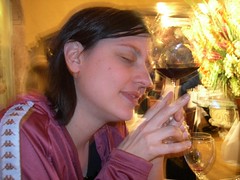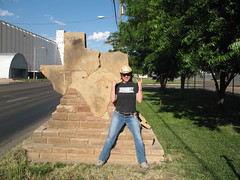
C&D STATS:
Miles driven: 8060
Wines Tasted: 437 (approximately; counting barrel tastings)
Winemakers/Growers Interviewed: 33
Road Kill Sightings: 78
Hot Bartenders: 1
Hot Winemakers: 2
Snotty Winemakers: 2
Great Meals: 10
National/State Parks Hiked: 8
Percentage of Regret For Spending Shitloads of Money On Journey: 0.00%
Here we are at long last. My journey is over, and I managed to avoid the inclination towards the ubiquitous 'tasting notes' the whole damn trip...until now. Now you get it all at once.
The following wines are my favorites from the trip. I'm not comparing them to any other wine or saying that these are the best the winery has to offer. They moved me for one reason or another, and the notes given are mostly the quick scribbles in my book. Some of the wines are ones I wouldn't normally buy or drink because they're just not my style, but I thought they were well made in the context of the style to which they belong.
The Western Wine Tour Roundup List of Wines That Do Not SuckTEXAS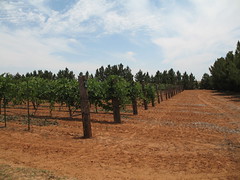
Woodrose Winery 2004 'La Cigale' Red Blend (Texas High Plains)
There's a coffee shop in town called 'TexaFrance'. That's this wine. Jammy, stony, grin-of-renewed-hope inducing.
Pheasant Ridge Winery 1982 'Proprietor's Blend' (Ruby Cabernet), Texas High Plains
As this wine was poured from the magnum, it was all, "How you like me now?" And we were all, "damn! How'd you stay that color after 24 years?" And it was all, "Ain't my fault nobody knows from Texas wine!" And we were all, "We'll totally spread the news!" And then we drank it.
Zin Valle Vineyards 2004 Malvasia, Mesilla Valley
Zin Valle grows this fruit. Crisp, almost all dry. I likey.
Zin Valle Vineyards 2003 Zinfandel, Mesilla Valley
The first Zin I've had from Texas. A predictably huge, manly thing, but well-balanced and flaw-free.
NEW MEXICO
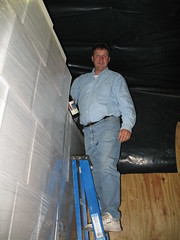 Luna Rossa Winery
Luna Rossa Winery 2003 'Nini' Italian Blend
A brightly acidic little number for the table. A kitchen-sink blend with several Italian varieties not normally known to cavort with tumbleweeds. But there they are.
Luna Rossa Winery 2002 Refosco
Random Italian varieties in unlikely places really float my little boat. My notes said 'aw yeah', so I think this one worked for me.
ARIZONA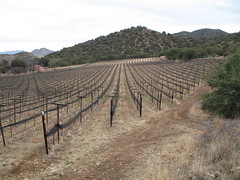
Colibri Vineyard 2004 Mourvedre
Lots of that good broody, leathery fruit the people love. It's technically a critter label, but 'Colibri' means 'hummingbird' and hummingbirds zip and dart above the vineyards. They're cute as hell. I'll allow it.
Callaghan Vineyards 2004 'Lisa's Selection' White (60% Viognier, 40% Reisling)
Smells fresh, floral and fruity. Crisp, mostly dry.
Callaghan Vineyards 2004 'Back Lot Cuvee' (62% Mourvedre, 38% Syrah)
From the Dos Cabezas vineyard. Good acid to hold up that dark fat fruit.
Sonoita Vineyards 2003 'Antelope Red' (60% Cab Sauv, 40% Nebbiolo)
Nebby steps up to Cab and says: Let me give you a story to go with those explosions.
CALIFORNIASanta Maria Valley/ Santa Barbara County 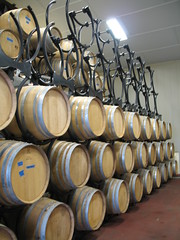 Kenneth Volk Vineyards
Kenneth Volk Vineyards 2004 Pinot Noir, Santa Maria Valley
Big, but Pinots from Santa Maria Valley have this special something that I dig. Big, fresh florals and black tea. Bright and focused flavor.
Kenneth Volk Vineyards 2003 Cabernet Sauvignon, Carmody McKnight Vineyard, Paso Robles
Jewel toned and elegant in its bigness.
Aqua Pumpkin 2004 Dry Malvasia Bianca
White fruit, white flowers, crisp.
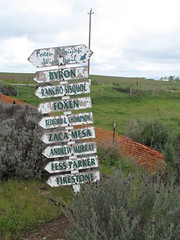 Foxen Vineyard
Foxen Vineyard 2004 Pinot Noir, Santa Barbara
I liked this Pinot Noir better than most others I had, despite the fact that it looked more like syrah than Pinot in the glass. Again, that special sumpin-sumpin about Santa Maria. Lots of explosive aromatics and brilliant color. I really dug this wine.
Foxen Vineyard 1999 Syrah, Santa Barbara
Beautiful, big, built to last.
Longoria Winery 2003 'Evidence' Bordeaux Blend (57% Cab Franc, 22% Merlot, 21% Cab)
I appreciated it because it didn't whap me upside the head with forward fruit the way so many had on this leg o' the tour.
Alma Rossa Winery 2004 'La Encantada' Pinot Noir, Santa Barbara
Richard Sanford, formerly of Sanford Winery, is now garagiste-ing out of an industrial park with this new label. You don't want to know what happened to Sanford. You really don't.
Alma Rosa Winery 2005 Pinot Grigio, Santa Barbara Co.
Sometimes lush is good.
Cold Heaven Cellars 2004 'Deux C' Viognier
Morgan Clendenen, wife of Jim Clendenen of Au Bon Climat, et al.
Lovely woman. One half Santa Barbara fruit, the other grapes from the Condrieu region of France, in cooperation with Yves Cuilleron. A creamy, spicy Viognier with well integrated oak influence. Still would like to see what she could do in stainless steel, though.
Clendenen Family Vineyards 2004 Nebbiolo, Bien Nacido Vineyard, Santa Maria
Morgan Clendenen's side project to help put her kids through college, so you can drink knowing you've done your part. A deep, aromatic Nebby that drinks well now.
Curtis Winery 2004 'Heritage' Rose
I really dig these guys. This super dry, crisp rose...wish I had some right now.
Curtis Winery 2003 'The Crossroads' Grenache, Santa Barbara
Stony but light, great bright spicy grenache.
Curtis Winery 2002 Mourvedre, Santa Barbara
a lone blackberry smashed into a leather saddlebag. Or something. Nice stuff.
Stolpman Vineyards 2002 Nebbiolo, Santa Barbara
This bottle had been open 4 days, and it was excellent. All the floral/tar notes under bright fruit.
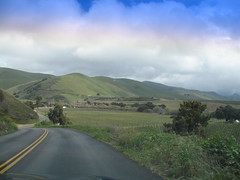 Palmina Winery
Palmina Winery 2005 Traminer
Lean, clean and mineral, and true to the Northern Italian style.
Palmina Winery 2005 Tocai Friulano
Fresh, light, crisp, floral with a touch of honey.
Palmina Winery 2004 Barbera
Firm acid core, herbs, redberry, violets.
Palmina Winery 2004 'Undici' Sangiovese
Big, lengthy Tuscan style Sangio. I really like these folks. You should check them out soon. Like, right now.
Arroyo Grande ValleyLaetitia Vineyard and Winery 2002 Brut de Blanc (70% Chard, 30% Pinot Blanc)
It was my first taste of a long set of them, but I just...couldn't...dump it. Very charming stuff: nutty, citrus, great herby nose.
Laetitia Vineyard and Winery N/V Brut Rose
One ripe melon ball and one single strawberry floating in an ice cold glass of mineral water handed to you by the Angel of Happiness.
Laetitia Vineyard and Winery 2004 'La Colline' Single Vineyard Pinot Noir
Lush, spicy now, and will lay back well. My favorite of their line o' Pinots.
Edna ValleyClaiborne and Churchill 2004 Dry Gewurtztraminer, Central Coast
When the bottle says 'Alsacian style', it ain't lying. It smells like Alsace. Spicy and fruity and food-loving. Highly recommended.
Claiborne and Churchill 2002 'Twin Creeks' Pinot Noir, Edna Valley
Aromatic and balanced. Nice.
Kynsi Winery 2004 Pinot Blanc, Bien Nacido Vineyard
Maybe I just really dug the owl on the label; again, if the critter actually lives on your vineyard property, it's okay to put her on the label. Bien Nacido pops out such nice fruit, and this wine showcases it well. Dry, round and appley.
Paso RoblesTablas Creek Vineyard 2003 'Esprit de Beaucastel' Blanc (Roussane w/ Grenache Blanc)
I tried three consecutive vintages (02,03,04) and like this one best. This is an ageworthy white that's hard to keep long enough to age. Focused treefruit and minerals, looooong finish.
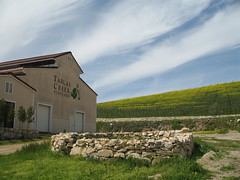 Tablas Creek Vineyard
Tablas Creek Vineyard 2003 'Cote de Tablas' Rouge (60% grenache, 24% syrah, 12% mourvedre, 4% counnoise) Rhonealicious! Forward bright grenache fruit and meaty syrah, wet rock minerals.
Tablas Creek Vineyard 2003 Syrah
Big but elegant, with a great finish.
Tablas Creek Vineyard 2003 Tannat
Meaty, dark and rich with a manly tannic grip. Good haunch of roast beast wine.
Carmody McKnight Vineyard 2002 'Cadenza' Red Blend (50% cab, 44% merlot, 6% cab franc)
Extracted and full, good acid core, and smooth tannins.
Caparone Winery 2002 Aglianico, Paso Robles
Meaty, savory, leathery and tannic, just like the Lord intended.
Carmel Valley/MonterreyCima Collina 2004 Chardonnay, Chula Vina Vineyards
I tried a lot of chardonnay. I get credit for trying. But of all the ones I tried, this was among my favorite because it had a tropical tanginess that stood up to the malo creaminess. And with a touch of minerals, to boot.
Cima Collina 2004 Pinot Noir, Salinas Valley
Made by a true Pinotphile, unfined and unfiltered, yet remarkably translucent in color. Lots of floral/tea/berry goodness. Nice.
Georis Winery 2000 Estate Merlot
A very interesting tasting room. This guy makes these built-to-last Merlots, some of which are a little vegetal, but others are really nice like this one. Red berry over chocolate and spice with a nice grip at the end. Already with six years on it, I thought it would get even better in a few more years.
Santa CruzBonny Doon Vineyard 2004 Malvasia Bianca
Grapefruit soda, man. Great stuff. Drink it up for the summer.
Bonny Doon Vineyard 'Ca Del Solo' 2004 Sangiovese
Lip smacking, fruit forward sangio with minerals, flowers and a wee hint of cocoa.
Bonny Doon Vineyard 2004 Cabernet Franc (DEWN only)
Fantastic color...what is that, magenta? Wow. Incredibly fresh, tart fruit with that lovely dusty flowers thing Cab Franc gives.
Sonoma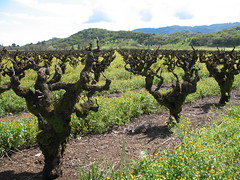 Bucklin Vineyards
Bucklin Vineyards 2003 Old Hill Ranch Zinfandel
In massive, forward, extracted wines like a lot of Zins, I look for great acid cores to hold them up, and for well integrated oak so it doesn't taste like a milkshake stirred with a two-by-four. This Zin fit that bill. Layers and layers of ripe fruit for the ripe fruit lover in you.
Bucklin Vineyards 2003 'Mixed Blacks' Red Blend (Zinfandel, Petit Sirah, Alicante Bouchet, Grenache)
A field blend meant to emulate the traditional blends this very old vineyard might once have yielded. Deep fruit and spicy notes, intense but well balanced.
Sonoma CoastSonoma Coast Vineyards 2003 Syrah
The Sonoma Coast lends some cooler weather and higher acid, and I likey.
Sonoma Coast Vineyard 2003 Pinot Noir
Fresh, bright, but deep and ageworthy.
OREGONWillamette Valley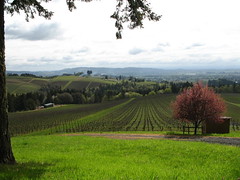 Argyle Winery
Argyle Winery Knudsen Vineyard 1998 Brut (70% Pinot Noir 30% Chardonnay)
Long and complex, fine pearls. Nice.
Argyle Winery 2004 Pinot Noir, Willamette Valley
Silky and sexy, not too huge.
Ponzi Vineyards 2003 Reserve Pinot Noir, Willamette Valley
Unfined, unfiltered. Smoky, silky, but a little oaky. Still, it gets big points for style, being lean instead of HUGE, like so many Pinots I had here.
Soter Vineyards 1999 Brut Rose
Brilliant salmon hue, unusually rich and spicy. It struck me as very unique.
Soter Vineyards 2004 North Valley Pinot Noir
Floral, tart berries, minerals and oak influenced aromas like cocoa and vanilla. This could use some time, but it's very silky and has great length.
Chehalem Wines 2005 'INOX' Chardonnay
Stainless steel, baby. Like mama loves. Bright citrus/apple with minerals and a creamy finish.
Chehalem Wines 2001 'Rion's Reserve' Pinot Noir
Less massive than some of the others, and with a few years on it in bottle. More silky and elegant than some of the single vineyards I tried here.
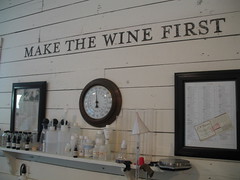 JK Carriere Wines
JK Carriere Wines 2001 Pinot Noir
Dried orange peel, herbs, lean power, and unobliterated tannic structure.
Sineann Vineyards 2005 Celilo Gewurtztraminer, Columbia Gorge
High acid structure, great minerality.
Sineann Vineyards 2004 Pinot Noir, Schindler Vineyard, Willamette
Of all this guy's super-duper high octane single vineyard offerings, this one struck me the most. Intense but with earthy-ashy notes and sort of a forest floor quality.
1999 Eyrie Vineyards Pinot Noir
I had this in Orcas Island, after I'd already left Willamette. I wish I'd gotten to talk to David Lett. This seven year old Pinot tasted like earth and mushrooms and was paired with a salad of roasted morels and onions. I swear, after all those gigantic Willamette Pinots, I nearly wept.
WASHINGTONO'Shea and Scarborough Late Harvest Semillon (unreleased)
This was a sample from that great couple of garagisters in the Queen Anne district of Seattle. Their reds were all still in barrel, and were coming along nicely, and this little late harvest number was soooooooo freakin' lovely. No you can't get it yet, but like
Maggie says, "Buzz, baby. Buzz." Look for these guys.
Yakima ValleyDesert Hills Winery 2003 Syrah
Chocolate and white pepper with a touch of mint. Well priced. The guy who makes this wine is the inventor of an important natural wax coating for apples. Little trivia there, for ya.
Portteus Vineyards 2004 Petit Sirah
Very nice without being too much. Peppery and meaty, tame but present tannins.
Chinook Winery 2004 Sauvignon Blanc
Lemony-herby.
Chinook Winery 2004 Cabernet Franc
A box of dusty flowers under juicy berries. Yum.
Walla Walla/Columbia Valley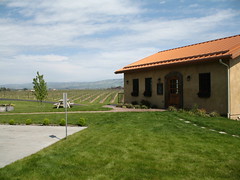 Pepperbridge Vineyards
Pepperbridge Vineyards 2003 Cabernet Sauvignon
Full but not screaming, great structure, hints of graphite on the nose. Kinda pricey, but nowing how Pellet keeps his vineyards makes a difference.
Va Piano Vineyards 2003 Cabernet Sauvignon, Columbia Valley
Intense and complex with good acid core.
Woodward Canyon Winery 2003 Merlot, Columbia Valley
I wrote 'baked plums and brownies...f**k yeah!' in my book. But it was the elegantly balanced acid and tannins that I thought were so great.
Woodward Canyon Winery 2003 'Artist Series' Cabernet Sauvignon
Same elegance. I wrote 'f**k Napa, drink Walla Walla!' here. I think I meant this: if you're going to spend upwards of $40 on a Cab or Merlot, you ought to explore Walla Walla first. You're gonna get a lot of bang for your buck.
K Vintners 2004 Milbrandt Syrah, Columbia Valley
Unctious but lean, earth, meat and minerals. Could use some time.
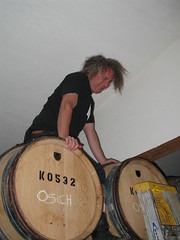 K Vintners
K Vintners 2003 'Lucky #7' Syrah, Seven Hills Vineyard
Minty herbs on nose, big boom on the mid palate. Good grip. Rocky.
Colvin Vineyards 2003 Spofford Station Syrah, Walla Walla
Even though Mark Colvin can be a little aloof, I think he makes fantastic wines. They're built to age and usually need some time, but they're just gorgeous. This syrah has lots of great floral aromas and a high acid core. Love that.
Colvin Vineyards 2002 Cabernet Sauvignon
Another layback, but appreciable now if you aren't a tannin wimp. Cedar, blackberries, tobacco.
Tamarack Cellars 2004 Cabernet Franc, Winebaum Vineyard
Don's wines are big but have great movement through the palate, which is why I agree with all the accolades. This one's reticent on the nose but all that Cab Franc charm.
Tamarack Cellars 2002 De Brul Vineyard Reserve Bordeaux Blend, Yakima Valley
Lots going on in the glass, great movement, not too forward. Excellent.
********
So...what now?
Well, hell--I'm going to milk this trip for all its worth, what else? Next up: I try to wrap my little mind around what I learned on this journey. Maybe I'll tackle the terroir question, who knows? You'll hafta wait and see.
Clinks to all.














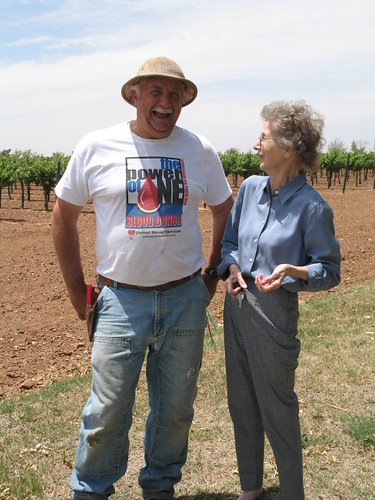
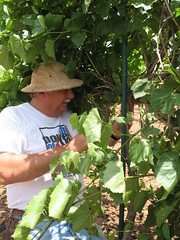 I followed Bobby while he tended to two of the vineyards under his care. He showed me how to graft buds, explained the use of 'gin trash' (remnants of raw cotton leftover after processing) in the soil to assist drainage. We drank from a water hose and watched impossibly large jackrabbits kick up little clouds of red dust with their hind legs.
I followed Bobby while he tended to two of the vineyards under his care. He showed me how to graft buds, explained the use of 'gin trash' (remnants of raw cotton leftover after processing) in the soil to assist drainage. We drank from a water hose and watched impossibly large jackrabbits kick up little clouds of red dust with their hind legs. 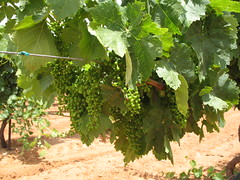 After all the vineyards I've seen, these are the ones I most care about, and I hoped Bobby had some good news for me about the future.
After all the vineyards I've seen, these are the ones I most care about, and I hoped Bobby had some good news for me about the future.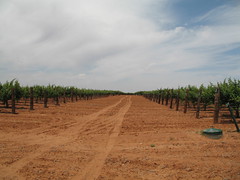 Before dinner that evening, Bobby pulled out a couple of Texas Viogniers that can be found on the shelves in the larger metro areas. Neither was worth finishing; one was flawed in a typical way I find with Texas wine and smelled like Pineapple scented fingernail polish, and the other was just dull as hell. This was what I expected, what I was used to. But with the first course, the another Viognier appeared, one Bobby had made under the label 'Brennan', and the difference was astonishing. This one was crisp, unflawed, and true to varietal. The second bottle was one that had been made by a new winery in the Hill Country AVA (my backyard) with Bobby's Grenache and Mourvedre.
Before dinner that evening, Bobby pulled out a couple of Texas Viogniers that can be found on the shelves in the larger metro areas. Neither was worth finishing; one was flawed in a typical way I find with Texas wine and smelled like Pineapple scented fingernail polish, and the other was just dull as hell. This was what I expected, what I was used to. But with the first course, the another Viognier appeared, one Bobby had made under the label 'Brennan', and the difference was astonishing. This one was crisp, unflawed, and true to varietal. The second bottle was one that had been made by a new winery in the Hill Country AVA (my backyard) with Bobby's Grenache and Mourvedre. 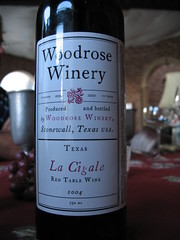
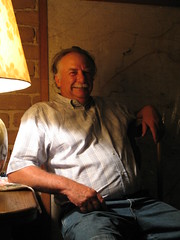
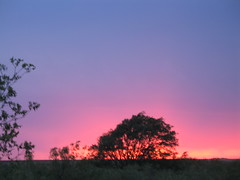
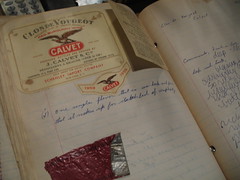 We went to France the next year, we went to Alsace, to the Rhone, to Burgundy and Bordeaux, and these guys were making wonderful wines with no equipment. They had nothing...handlevered pumps, canvased hoses, old barrels, and concrete tanks. And we realized that what it took to make great wine was great grapes. We knew we could do that. I was a farm kid, I knew I could grow them. I knew we could do it. That's when we made the decision to start Pheasant Ridge.
We went to France the next year, we went to Alsace, to the Rhone, to Burgundy and Bordeaux, and these guys were making wonderful wines with no equipment. They had nothing...handlevered pumps, canvased hoses, old barrels, and concrete tanks. And we realized that what it took to make great wine was great grapes. We knew we could do that. I was a farm kid, I knew I could grow them. I knew we could do it. That's when we made the decision to start Pheasant Ridge.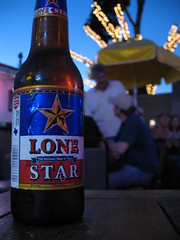
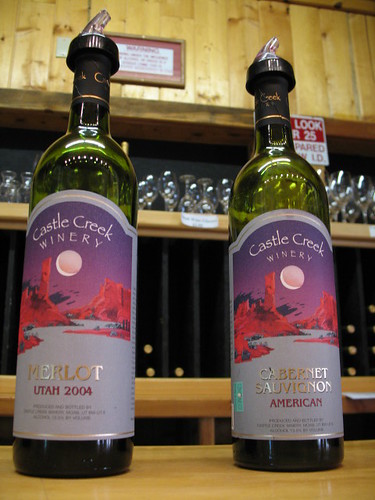
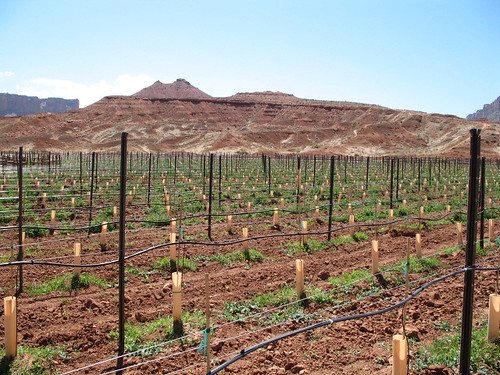 But no, not just for show. These vines belong to
But no, not just for show. These vines belong to 